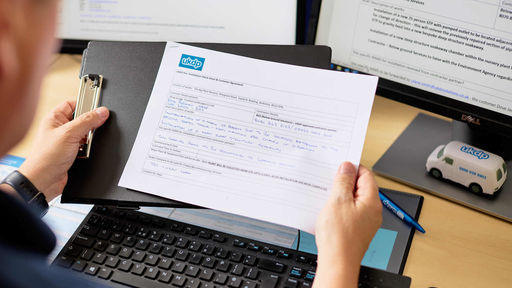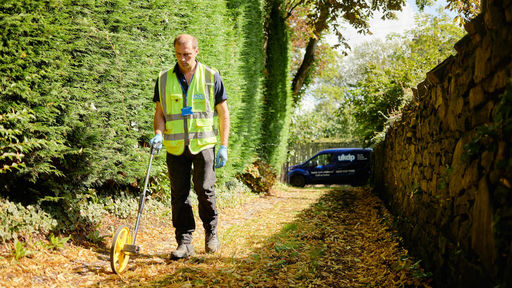What is a cross connection in a septic tank?

Cross connection in a septic tank? Find out what it means and what you need to do.
If you've ever owned a more rural property, you're likely to have had an off mains drainage system. Properties have an off mains drainage system when they are too far away from a mains drainage pipe to be able to connect to it. It usually comprises a tank such as a septic tank, sewage treatment plan or cesspit. Septic tanks and sewage treatment plants then have some sort of outlet pipe, either to a drainage field (also known as a soakaway) or straight to a watercourse.
So, what is a cross connection in a septic tank or other off mains drainage system? A cross connection is a term used when a pipe carrying rain water is connected to the foul water drainage system, or vice versa.
Is this a problem? Yes, it is. Why? Because during sustained and heavy rainfall (the likes of which we seem to have become accustomed to in the UK of late!), irrespective of what type of off mains drainage system you have, there will be negative consequences. Let's look at each type of system in turn.
The impact of a cross connection in a septic tank
To explain how a septic tank works, a septic tank takes all the waste water from a property's toilets, baths, showers and white goods such as dishwashers and washing machines. During the periods of the day when these facilities aren't being used, which means there's no inflow into the tank or disturbance of its contents - typically at night or in the daytime when the owners are at work - separation of the waste occurs. Hold on to your lunch while I explain what that means. The dense/solid matter sinks to the bottom of the tank to form the sludge layer. The fat, oil and grease floats to the top and forms the scum/crust layer (I did warn you!) and that just leaves the dirty water in the middle. This dirty water is referred to as `clarified liquor' which makes it sound far less unpleasant than it is.
Only the middle section - the separated dirty water - should ever be allowed to exit the tank and into the soakaway system or drainage field (both terms are commonly used). This is because a drainage field which is connected to a septic tank is only able to take the dirty water, mainly due to its construction and purpose - a drainage field is typically comprised of perforated or slotted pipework, to allow separated waste water to pass through. This then moves through the subsoils, which provide a form of treatment. So, if solid waste is able to pass in to the drainage field and the surrounding subsoils, it has the effect of blocking and polluting the routes through and ultimately causes failure.
So, what is the impact of a cross connection on a septic tank? Essentially, all the excess water entering into the tank creates a constant churn effect, and prevents the waste from separating as it needs to. This creates two major problems - the drainage field receiving more water than it is designed to take, but also due to the insufficient separation the wrong matter (fat, oil, grease etc.) will be pushed out of the septic tank and into the drainage field. As outlined above, this ultimately will lead to the failure of the drainage field!
The impact of a cross connection on a sewage treatment plant
A sewage treatment plant operates in a different way to a septic tank, and if you'd like to know more about the differences you can read our article here. Essentially, a sewage treatment plant provides more treatment of the waste, rather than just allowing it to separate as a septic tank does. To do this, it has a power supply and mechanical components which treat the waste, resulting in a cleaner water leaving the tank and into the drainage field.
In the instance of a cross connection into a sewage treatment plant, the constant inflow of excess water will push the waste through the different zones of the plant without there being adequate time for the treatment process to occur. The result of this is that untreated wastewater will then either enter straight into a local surface water (a ditch, stream or river) or it will enter into a drainage field and have the same effect as the septic tank example above.
The impact of a cross connection on a cesspit
A cesspit differs to a septic tank or sewage treatment plant in that it has no outlet. The waste goes in, and it stays there until the tank is emptied - as you can imagine, this has to happen quite frequently, and the tanks typically need to be pretty big!
So the real headache when it comes to a cross connection in a cesspit is a lot of excess water entering the tank, on top of all the waste it should be taking from the property. This causes the tank to fill faster than it should do, and in some instances the contents could back up to the property or overspill into the surrounding ground.
What should you do if you have a cross connection?
Unfortunately, cross connections are far more common than you might think. Of the thousands of septic tank inspections our engineers have carried out, 35% of the drainage systems have rain water cross connecting into the wastewater system.
The first thing to do, if you are ever buying a property with an off mains drainage system, is to ensure that you get a thorough homebuyers drainage survey carried out. During our surveys, a dye test of the rain water system is carried out, which enables our engineers to trace the path of the rain water and to identify if any of it ends up in the drainage system.
If it's too late for that, and you're one of the 35% who have a cross connection in your drainage system, the rules and regulations are clear that the rain water must be separated from the wastewater system. Unfortunately, it's not always a cheap task to undertake - but contact our friendly team today for advice and a quotation to get things put right for you.
Let's stay in touch! Sign up for our helpful newsletter today

Sam's career prior to UKDP was spent in the marketing and service industries, so she is focused on making sure we look after our customers – and getting the UKDP message out there! Sam has overall responsibility for business operations and for delivering the best customer service we can.


